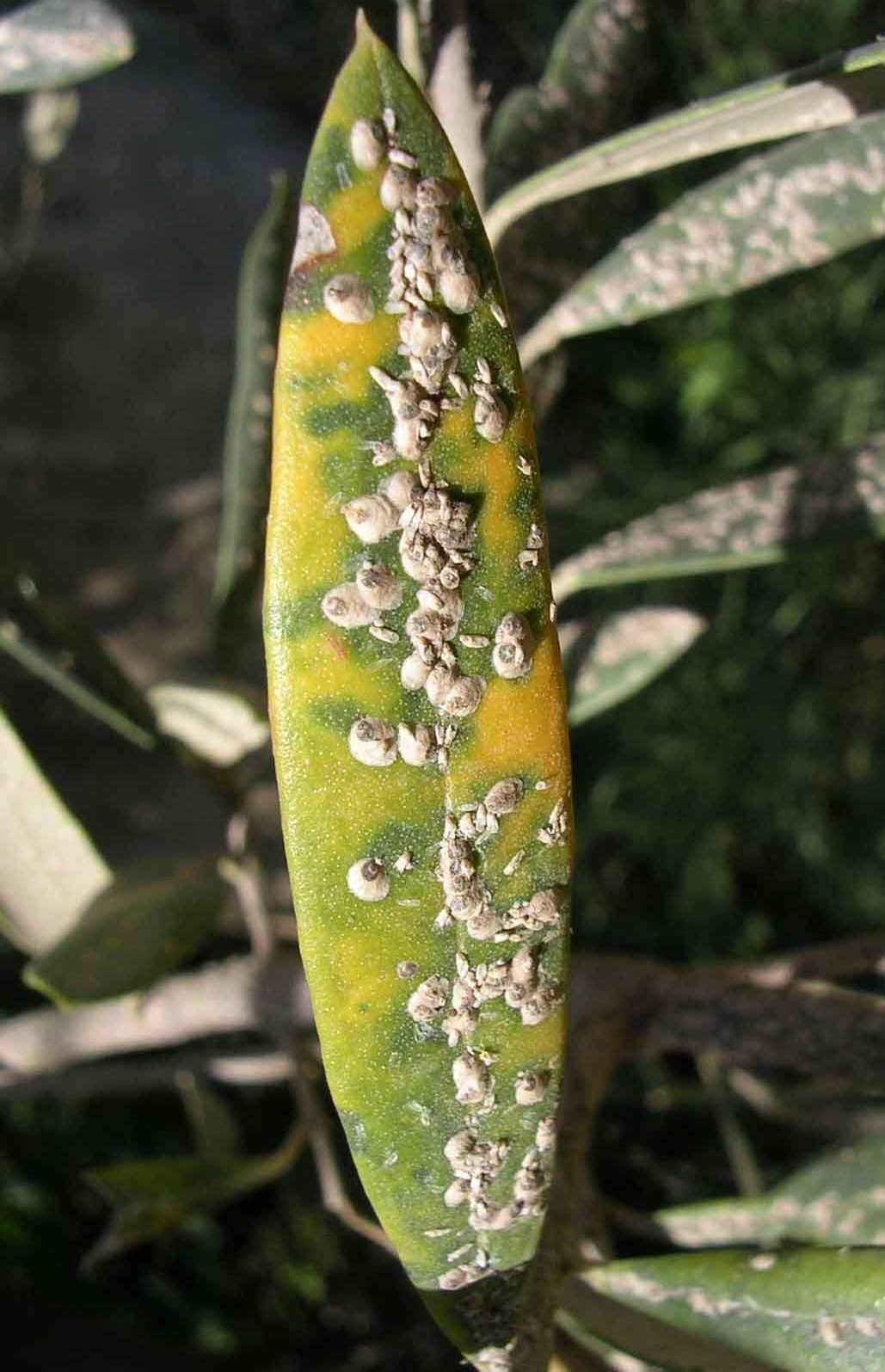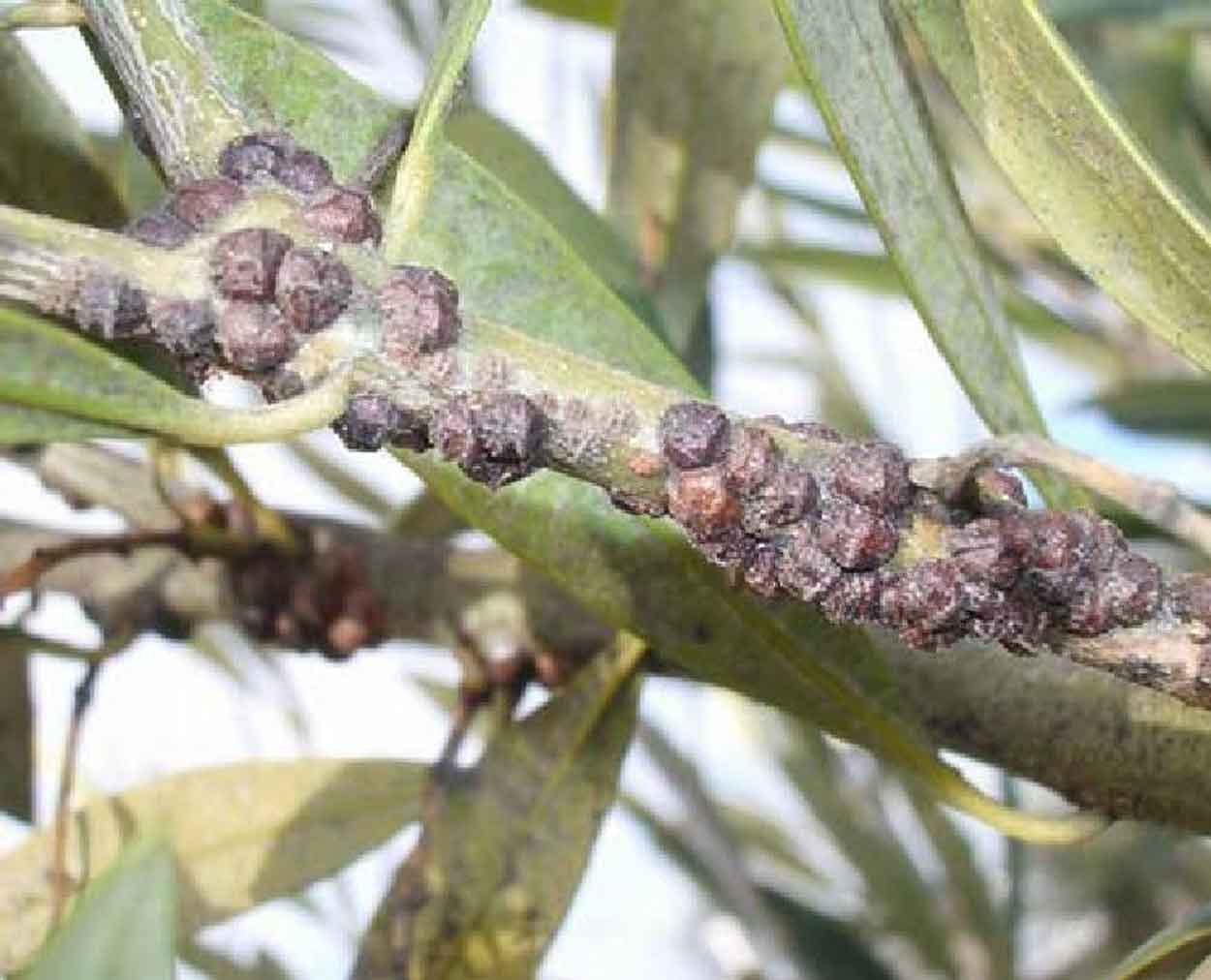|
|
| Parlatoria Oleae |
Parlatoria oleae was described for the first time in 1880 by Colvée, observing samples of olive-tree from Valence in Spain (Balachowsky, 1953). This pest is known as affecting no less than 211 host plant |
This research was carried out over two consecutive years (2001-2002) in the olive-growing station of Cape-Djenet situated at 60 km east of Algiers. The olive grove (Chemlal variety) of 1 ha shosen as site of study consists of 9 blocks of 102 trees each, that is 918 trees in total. |
Five branches of 20 cm approximately were taken from each sampled tree, one in the centre and the others at the four cardinal points. The collected vegetable material is treated in laboratory. The deducted insect scale are classified and dissociated as individuals alive and died according to their stage of evolution. In a previous work |
|
 |
Olive Diseases and Pests Parlatoria oleae has a cycle which depends closely on the local climatic conditions. The olive scale presents two generations per year in Greece (Argyriou and Kourmadas, 1979), in Italy (Laccone, 1981) and in the United States of America (Mc Kenzie, 1952). However, in Egypt, it shows 3 annual generations (Habib and al., 1969) and can even have up to 4 generations in Palestine (Bodenheimer, 1951). |
 |
This phenomenon is a result of the wintering females egg lay out which lasts up to four months. The new added eggs will increase the number of the individuals in the first generation. Olive Diseases and Pests the first eggs laid out will become the mobile larvae observed at the beginning of the second generation even before the completion of the lay out from females of the wintering generation. It is important to note that egg hatching which is weak in spring will increase from mid-July till the end of October during the second generation. |
Female of Parlatoria oleae spend the winter as fertilised adult and rarely in immature condition. The latter will be fertilised by males of the spring flight. The hibernation can affect females larvae of the second stage but in very low number. |
|
| The duration of egg-laying is related to the local climatic conditions and with the host plant cycle of development. Parlatoria oleae in Algeria, the duration of spring egg-laying is spread out than that of the summer period. It is known that this phenomenon is due to the abundance of the nutritive reserves stored by the females for the winter period. Olive Diseases and Pests it, also, contributes directly to the process of the ovogenesis and the multiplication of the ovocyts. |
|
|
|

